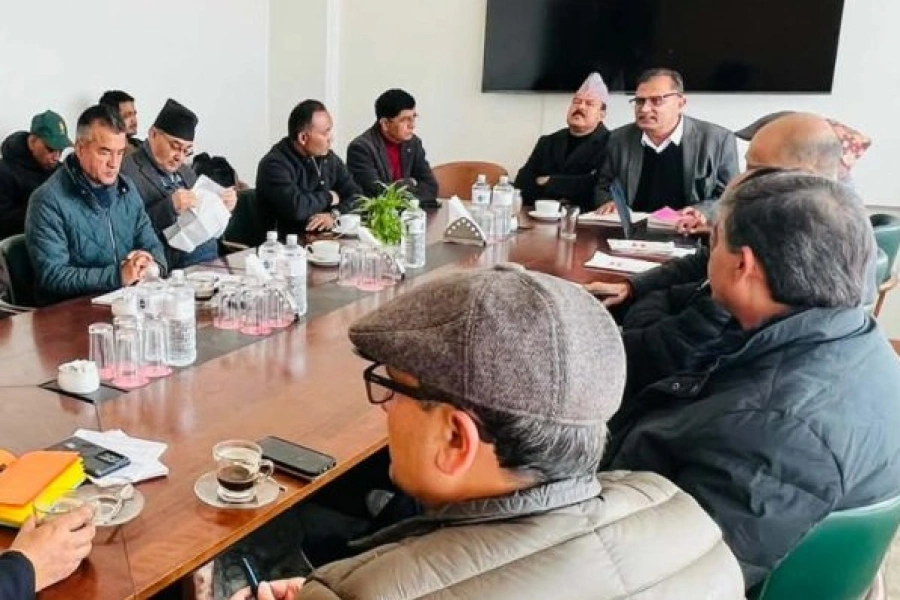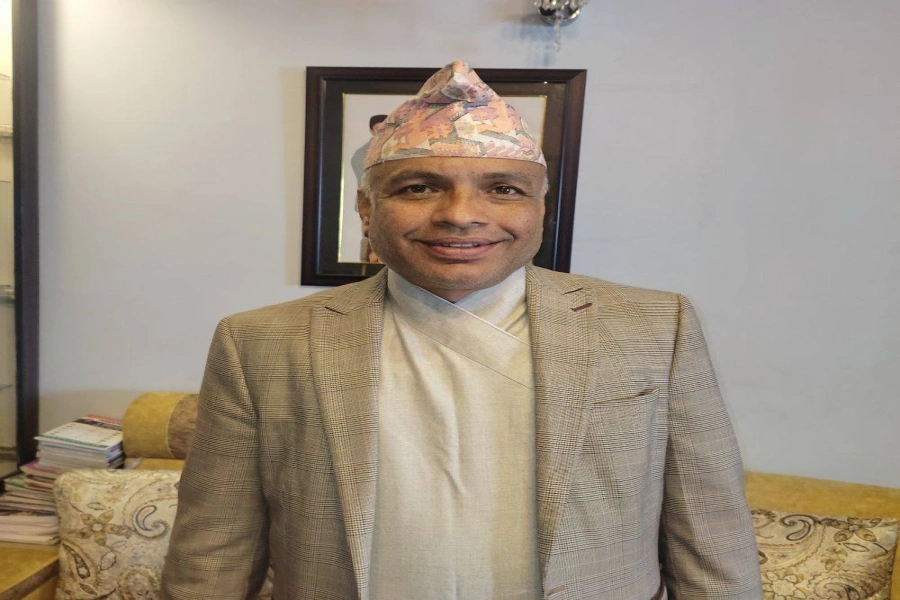SINDHUPALCHOWK, May 28: With the completion of infrastructure including dry port, roads and bridges, the Tatopani border is likely to reopen soon. However, stakeholders warn of safety concerns along Nepal’s vital trade point with the northern neighbor.
The border had been closed four years ago after sustaining major damages due to the catastrophic earthquake of April 2015.
Tatopani border of Sindhupalchowk, one of the most-affected districts, was devastated. Landslides occurred frequently here for a long time further damaging the roads and settlements. Even security personnel had found it hard to patrol this zone.
Compared to other quake-hit zones, the life here came to normalcy very late. However, business could not resume as Tatopani border remained closed. Now, after a long wait, the locals’ dream of resumption of trade along this route is finally coming true. No wonder, opening of the Tatopani border is a matter of national importance as well. However, the lack of preparation regarding safety and security has worried the locals and other stakeholders equally.
“There are still many temporary bridges. Roads are fragile at many points. Even small landslide may affect them,” noted an official with the road department requesting anonymity. “Our government’s failure to check the matter in time and proper communication with the Chinese government have led to this situation.”
Tatopani trade route to reopen in mid-June

The dry port at Tatopani which was under construction before the earthquake was completed by China after the disaster. China also built some roads and bridges to help resume trade through the border.
According to officials at the Department of Roads, over half a dozen places between Besari of Nepal to Liping of China are fragile. They cannot stand even small landslide. The earthquake had left the soil very delicate. Fixing of bridges and construction of roads here were simply not easy.
“Safety has indeed been compromised,” said the official.
The Chinese government had extended support to open 21 kilometers of road leading to Tatopani after the earthquake. There are four temporary Bailey bridges from Sadhi River to Larcha, which do not look safe either.
“The current of Bhote Koshi river is very strong. The soil here is too fragile. The infrastructures are not strong. So, in monsoon, things are going to be worse,” the official warned.
Nepali officials state that only minor renovation has been done at several sensitive points which face high risk of landslide. Even before, the Tatopani area was always prone to landslides.
“The road to Tatopani and the locals around were always sensitive due to the odd topography. Things are not reliable even now,” the official said.
The Daklang area which was severely affected by the earthquake has not been repaired properly either. Similarly, from Larcha bridge to Liping market, the entire section under high risk of landslides.
When the Nepali authorities had earlier held meeting with their Chinese counterpart for reopening the border, the Chinese side had given Nepal two options - whether to open just the 21 kilometers of the track or build solid infrastructure to mitigate the risks of floods and landslides. The Nepali officials could not clearly take a stance for the second option.
“Then it was decided only to open the track for the time being after repairing it to make the road functional. It was not a long-term solution,” another official with the department remarked.
When the Chinese officials were asked for their comment, they said that there was agreement just to open the track. That is why opening of the track was prioritized.
“It was weakness on our part that we could not convince them for long-lasting and strong infrastructure,” he added.
Right after the earthquake, the government itself was keen on opening the track. Even tender notice was issued for that. However, the Ministry of Finance later notified that the work would be handled by the Chinese government.
Keshab Sharma, director general at the Department of Roads, admitted the fragility of the roads and bridges. “Back then, the focus was only on opening the track. So, the Chinese government did just only that,” he said. “Government-level talks are going on regarding permanent solution to the problems and smooth operation of the Tatopani border,” he added.





































